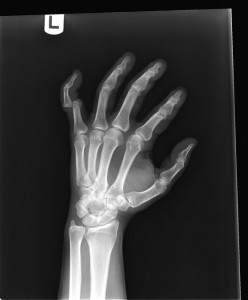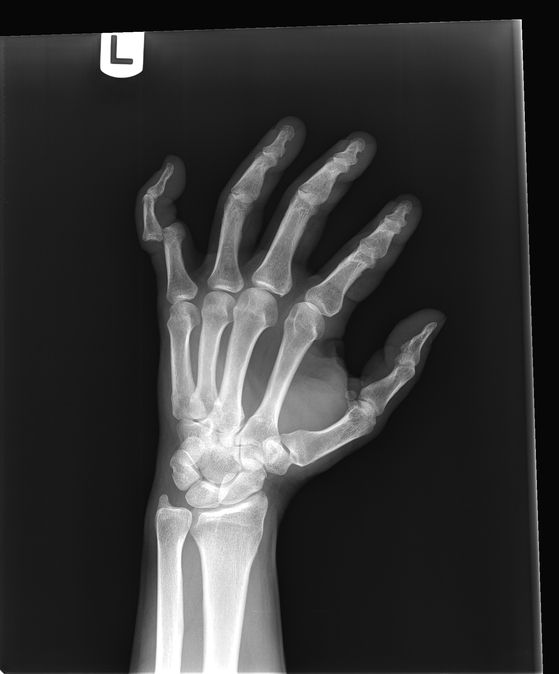A finger dislocation refers to an incorrect alignment of the bones of the finger caused due to physical trauma. Certain injures may damage or tear the ligaments that are around the joints of the fingers, thus causing the bones to part and displace in an abnormal arrangement. In case of finger dislocations, the digits are often swollen, painful and deformed. Most contact sports activities such 
Disclaimer: the details posted on this page are for information purposes only. To effectively learn to recognize and manage skeletal emergencies such as dislocations enrol in St Mark James first aid training.
Anatomy of the human finger
To properly understand how a finger dislocation occurs, it would be helpful to understand the anatomy of the finger closely.
Every finger of your hand consists of three bones namely the phalanges – you can see this by bending your finger – there will be three sections. At each joint of your finger, the phalanges are held together with the help of ligaments. Muscles in the forearm and hand become tendons and attach themselves to the phalanges of the finger as well. The muscles in the arm move the bones and the fingers by pulling the tendons connecting the finger bones.
The bones of the fingers are connected to 5 metacarpal bones which make up the main body of your hand.
Causes
The ligaments maintain the alignment of the bones in your fingers. Any injury that tear these ligaments may result in displacement of the bones and a finger dislocation. The most common cause of finger injuries such as finger dislocations are sports activities that may cause physical trauma to the fingers.
Other causes of finger dislocations include:
- Fist fights and altercations
- Falls
- Occupational/industrial accidents
Signs and symptoms
Signs and symptoms of finger dislocation are as follows:
- Pain in the affected finger
- Deformity of the affected finger
- Swelling of the finger
- Tenderness of the finger
- Bruising on or around the affected finger
- Restricted movement of the finger
- Abnormal movement such as rotation of the digit of the finger
- Inability to move the affected finger
Complications
Complications associated with finger dislocations include:
- Chronic finger pain
- Chronic finger deformity
- Osteoarthritis
When to seek medical attention
See your doctor immediately if any of the problems occur:
- You lose sensation in your fingers
- Loss of circulation in fingers – fingers turn blue
- Numbness of the finger
- Paleness of the skin of the finger
- Redness
- Severe, worsening or persistent pain in the finger
- Worsening tenderness over the phalanges
Treatment
- Control symptoms
- Remove rings and watches from the affected hand
- Apply ice on the affected region to reduce pain and swelling
- Keep the affected finger elevated – above heart level — to reduce swelling
- If the finger seems to be deformed or abnormal, do not try to straighten your finger or realign it. Seek medical help promptly
See a health care provider immediately. The doctor may evaluate the condition of your finger with X-rays and administer medical procedures to realign the affected finger.
Your doctor may place your finger in a splint or cast. It is important that you keep it clean and dry.
Ice your finger for a few days for 20 minutes, if you are able to do so. Take pain medication prescribed by your doctor.
Surgery may be needed in some cases depending on the severity of the injury.
Learn More
To learn more about skeletal emergencies and dislocations sign up for a first aid course near you (more information).
Related Video

